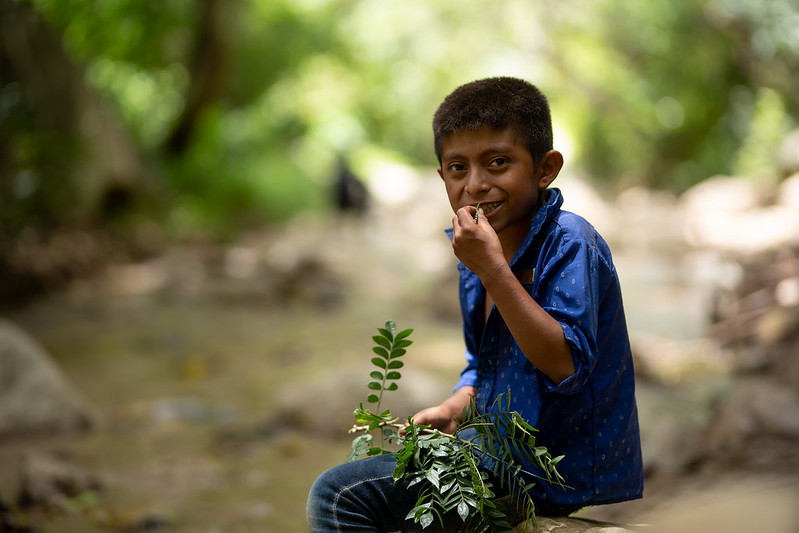Successful Programs From Foreign Aid to Guatemala
 While Guatemala is home to the largest economy in Central America, 55.2% of Guatemalans lived in poverty in 2023. Because of the country’s high poverty rate, foreign aid to Guatemala is essential to reducing instability and providing Guatemalans with the resources to establish essential services and agricultural production. Guatemala’s high poverty rate could be due to natural disasters, such as hurricanes and droughts, causing agricultural setbacks. Additionally, political instability and violence have hindered Guatemala’s otherwise decent economy. The country is still recovering from a civil war that lasted for 36 years between 1960 and 1996. Without major investments in education, health and agriculture, Guatemalans continue to live in poverty.
While Guatemala is home to the largest economy in Central America, 55.2% of Guatemalans lived in poverty in 2023. Because of the country’s high poverty rate, foreign aid to Guatemala is essential to reducing instability and providing Guatemalans with the resources to establish essential services and agricultural production. Guatemala’s high poverty rate could be due to natural disasters, such as hurricanes and droughts, causing agricultural setbacks. Additionally, political instability and violence have hindered Guatemala’s otherwise decent economy. The country is still recovering from a civil war that lasted for 36 years between 1960 and 1996. Without major investments in education, health and agriculture, Guatemalans continue to live in poverty.
US Foreign Aid to Guatemala
According to the Brookings Institute, foreign aid “aims to support security, as well as the economic, social and political development of recipient countries and their people.” The United States spends about 1% of the annual federal budget on foreign aid. Additionally, the United States is the top contributor of foreign aid to Guatemala, alongside Spain, South Korea and the European Union.
In 2022, the United States provided $117.9 million in foreign aid to Guatemala per a Congressional report. Much of that funding was dedicated to development assistance. In 2023, the United States provided $121.3 million in foreign aid to Guatemala with a focus on humanitarian needs. President Biden has requested $164.5 million in foreign aid to Guatemala for 2024, according to Congressional Research Service.
Foreign aid to Guatemala funds programs aiming to improve the livelihood of Guatemalans and reduce poverty.
World Bank Country Partnership Framework (CPF)
The World Bank’s Country Partnership Framework (CPF) is a project that aims to increase human capital, resilience to natural disasters and climate change, and improve job opportunities in Guatemala. Over four years from 2024 through 2027, the World Bank’s CPF program will spend $2.5 billion to address Guatemala’s wide-ranging issues, according to the World Bank. These initiatives include infrastructure development, greater access to basic services, improved responses to natural disasters and greater access to economic opportunities in urban and rural areas.
Project Concern International (PCI) and USAID
Barrio Mio, a collaboration between Project Concern International (PCI) and USAID aims to reduce disaster risk in Guatemala by “improving urban infrastructure, housing and livelihoods.”
USAID and PCI launched a prototype of the project between 2012 and 2015 with great success. This included safeguarding homes against landslides through structural changes. The project also identifyed high-risk neighborhoods throughout Guatemala to reduce “vulnerability to crises before they happen.” In phase one alone, Barrio Mio improved nearly 3,000 shelters and provided clean water and sanitation for nearly 800 individuals.
While the first phase of Barrio Mio was launched in 2012, the project’s third phase concluded in 2020 with the expansion of the program in Guatemala City. A goal of the third phase was to increase the effectiveness of responses to urban emergencies, according to the ALNAP case study. Guatemala’s government adopted Barrio Mio’s methodology for emergency response and urban upgrading policy for communities that lacked stable infrastructure and essential services, Global Communities reports.
UN Guatemala Humanitarian Response Plan
The United Nations’ 2023 Guatemala Humanitarian Response Plan (HRP) targeted 2.3 million people. The plan focused on protection, food security and nutrition. The HRP targeted four primary groups including children affected by malnutrition, Indigenous and rural families facing food insecurity, people “in situations of human mobility” and people with disabilities.
Of the 4.6 million Guatemalans facing food insecurity in 2023, the HRP targeted roughly 500,000. Additionally, under the HRP, 117 schools were refurbished, allowing over 20,000 children to attend school with “improved educational conditions.” The plan also developed health services across Guatemala.
The Takeaways
Guatemala has faced several setbacks that have negatively affected its population, including climate-related disasters, political instability and economic mismanagement. Foreign aid has greatly helped Guatemalans facing food insecurity, malnourishment and a lack of health and education services.
– Marley Wilson
Photo: Flickr
